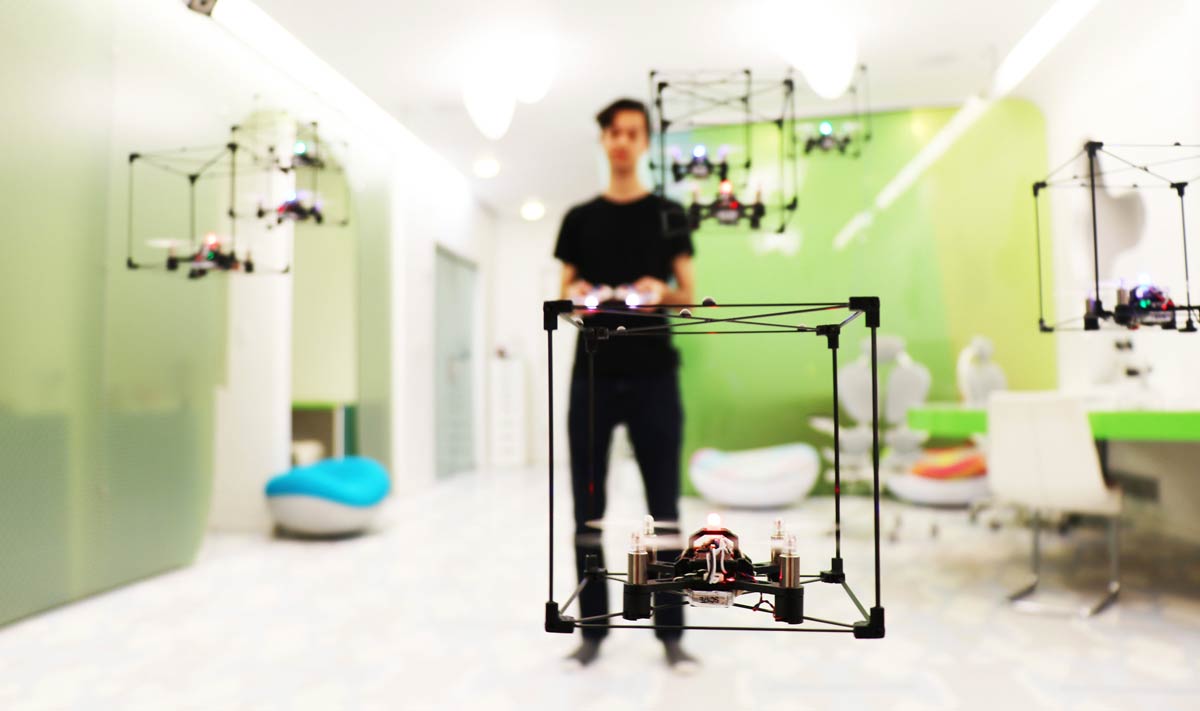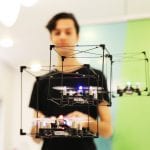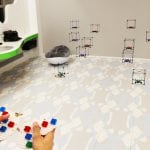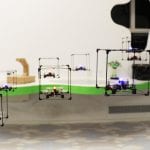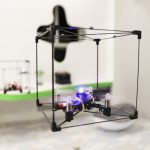Drones Become Child’s Play With Flying Bricks at LEGO World Expo
There are lots of drones designed for children to play with on the market, such as the Tello drone which can be programmed using Scratch, or the glove-controlled Aura drone which won the Kids at Play Interactive Award in 2017. Play in itself however is being reinvented in a new exhibition this week at the LEGO® World Expo in Copenhagen, Denmark. Children and their families will have the chance to discover a new creative method of play developed by Human Media Lab at Queen’s University using flying LEGO bricks.
Gone are the days of simply recreating your favourite sci-fi spaceship or historical building with the famous building blocks. Children (and playful adults alike) create a drone swarm by building LEGO elements into a shape of their own creation then use that as a controller to direct the flight of multiple drones in the form of their design. The system makes use of very small sensors and gyroscopes, enabling it to track the children’s movements as they bend and manipulate their creations. The effect combines creativity and technology, making the drones a conduit for child’s play of the future.
- Photo Credit: Human Media Lab
- Photo Credit: Human Media Lab
- Photo Credit: Human Media Lab
- Photo Credit: Human Media Lab
- Photo Credit: Human Media Lab
- Photo Credit: Human Media Lab
For Dr. Vertegaal, head of the Human Media Lab and professor of Human-Computer Interaction at Queen’s University in Kingston, Canada, it’s engaging children in a way that could potentially see interactive teaching reaching into new realms. “At the Human Media Lab, we believe this technology has the potential to take experiential learning to an entirely new level. We have created a technology that works to blend the digital and physical worlds together right before children’s eyes,” he says.
While still in experimental stages of design and development, Vertegaal can already envision a potential application for the technology, teaching young school children of the future about physics.
“As an example, imagine us interactively reconstructing the movement of planets around our sun or distant stars in the Milky Way galaxy,” says Dr. Vertegaal. “With this technology, we are able to simulate the physics of the natural world like gravity, planetary orbits, and more, giving children a chance to see what they have long learned from textbooks and two-dimensional depictions, in a real physical environment.”
The concept ties in well with the LEGO Creative Play Lab, whose mission is to “invent the future of play“. The 60-year-old company no longer owns exclusive rights to the building brick design, and through projects such as Flying Bricks, is seeking to add new dimensions to the popular brick play system. Invented in Denmark in 1932 ( Le Go is short for “play well’), the company continues to focus on the experience of play.
Tom Donaldson, VP of Creative Play Lab, at the LEGO Group elaborates, “At the LEGO Group, we continuously explore the opportunities offered by new technologies to create fun and creative experiences for children. We are happy to offer the visitors at LEGO World the chance to experiment with LEGO bricks and drones in collaboration with Queen’s Human Media Lab. While the technology is a playful experiment, and not a real LEGO product, it is a way for us to explore the boundaries of what can be done with a combination of technology, LEGO bricks and loads of playful imagination.”
The installation at LEGO World Expo has been created by The Human Media Lab in close collaboration with the Creative Play Lab team at the LEGO Group and Dr. Vertegaal’s research collaborator, Prof. Tim Merritt from Aalborg University in Denmark. Those who attend will have the chance to explore the flying brick technology and even talk about their experience with Professor Merritt, who hopes to derive insights from his talks with children on how they interact with the drones, how they imagine playing and learning with them in the future, and discover any issues they encountered while exploring the technology.
Are the flying LEGO bricks simply child’s play? We are sure they will appeal to the young as well as the young at heart.

